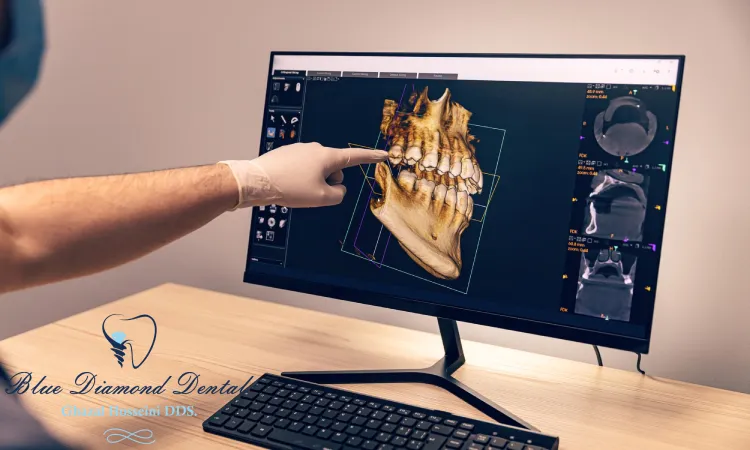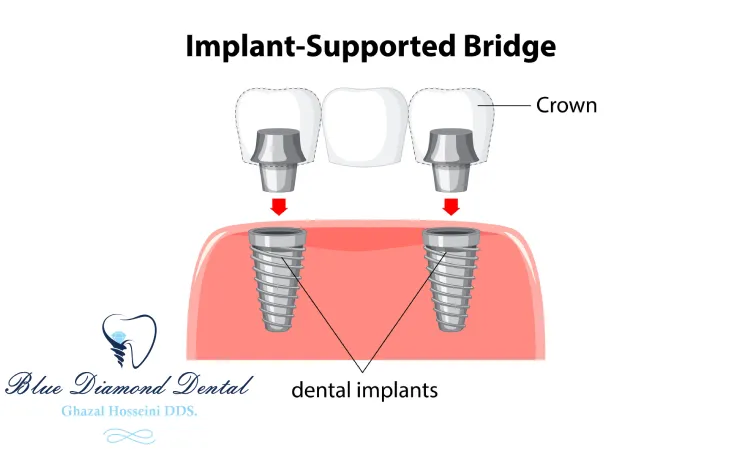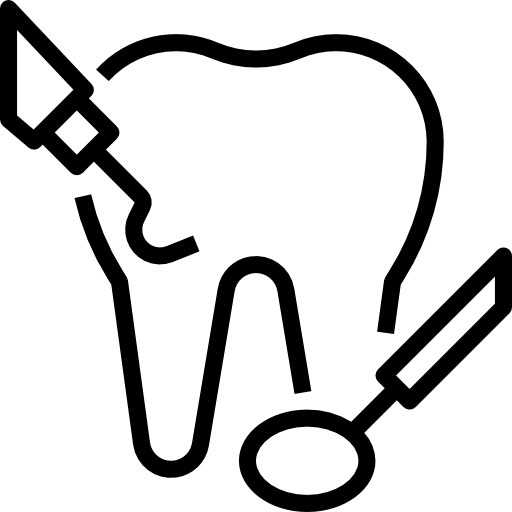
Implant-Supported Bridge (Anterior- CAD/CAM)
An implant-supported bridge is a type of dental restoration that replaces one or more missing front teeth with artificial teeth that are supported by dental implants. It is a durable and aesthetic solution that can restore the function and appearance of your smile. CAD/CAM stands for computer-aided design and computer-aided manufacturing, which are technologies that allow the dentist to design and fabricate the bridge with high precision and accuracy. In this article, we will explain the benefits, procedure, costs, and results of implant-supported bridge (anterior- CAD/CAM).
Benefits of Implant-Supported Bridge (Anterior- CAD/CAM)
An implant-supported bridge (anterior- CAD/CAM) has many advantages over other types of dental restorations, such as:
- It looks natural and realistic, as it matches the shape, size, and color of your natural teeth and gums.
- It is stable and comfortable, as it is firmly attached to your jawbone and does not move or irritate your gums.
- It is strong and durable, as it is made of high-quality porcelain and metal that can withstand the biting and chewing forces of your front teeth.
- It preserves your bone and oral health, as it stimulates your jawbone and prevents bone loss and gum recession that can occur when you lose your teeth.
- It improves your speech and digestion, as it allows you to pronounce words clearly and chew food efficiently.
- It enhances your confidence and self-esteem, as it gives you a beautiful and attractive smile.
Procedure of Implant-Supported Bridge (Anterior- CAD/CAM)
Getting an implant-supported bridge (anterior- CAD/CAM) usually involves several steps:

- Consultation: In the first visit, your dentist will examine your mouth, take x-rays and impressions, and discuss your goals and expectations. They will also explain the pros and cons of implant-supported bridge (anterior- CAD/CAM) and help you decide if it is suitable for you.
- Implant placement: In the second visit, your dentist will perform a minor surgery to place the dental implants into your jawbone. The number of implants needed depends on the number of missing teeth and the condition of your bone. The implants are small titanium posts that act as artificial tooth roots. They will need some time to heal and integrate with your bone, which can take several weeks or months.
- Bridge fabrication: In the third visit, your dentist will use a state-of-the-art scanner to take a digital impression of your mouth, which will be used to design and fabricate your bridge using CAD/CAM technology. The bridge is a single piece of porcelain that has artificial teeth attached to metal frameworks that fit over the implants. The bridge is customized to fit your mouth perfectly and match your natural teeth and gums.
- Bridge placement: In the fourth visit, your dentist will check the fit, color, and shape of your bridge and make any necessary adjustments. They will then attach the bridge to the implants using special screws or cement. They will also evaluate your bite and smile and give you instructions on how to care for your bridge.
Costs of Implant-Supported Bridge (Anterior- CAD/CAM)
The cost of implant-supported bridge (anterior- CAD/CAM) can vary depending on several factors, such as:

- The number and location of implants and teeth that need to be replaced
- The skill and experience of the dentist and the dental laboratory
- The quality and type of materials used for the implants and the bridge
- The geographic location of the dental office and the cost of living
Results of Implant-Supported Bridge (Anterior- CAD/CAM)
An implant-supported bridge (anterior- CAD/CAM) can provide you with a natural and beautiful smile that can last for many years with proper care and maintenance. However, it also requires some care and maintenance to ensure its longevity and effectiveness. Here are some tips to follow:

- Brush your teeth and your bridge twice a day with a soft-bristled toothbrush and a non-abrasive toothpaste. Avoid using whitening toothpaste, as it may damage the surface of your bridge.
- Floss your teeth and your bridge once a day with a gentle floss or an interdental cleaner. Clean the spaces between your bridge and your gums and the implants, as well as the spaces between your natural teeth.
- Rinse your mouth with water or a fluoride mouthwash after every meal or snack. This can help remove any food particles or plaque that may accumulate on your bridge or your teeth.
- Avoid eating hard, sticky, or chewy foods that may damage or dislodge your bridge. Examples include nuts, popcorn, candy, gum, or ice. Cut your food into small pieces and chew with your back teeth.
- Avoid drinking beverages that may stain your bridge, such as coffee, tea, wine, or cola. Use a straw or rinse your mouth with water after drinking them.
- Avoid smoking, as it can discolor your bridge and your teeth, as well as harm your oral health and the success of your implants.
- Avoid biting or chewing on non-food items, such as pens, pencils, nails, or bottle caps. These habits can damage your bridge and your teeth, as well as affect your bite and your jaw alignment.
- Avoid grinding or clenching your teeth, as it can wear down your bridge and your teeth, as well as cause headaches, jaw pain, or TMJ disorders. If you have bruxism, talk to your dentist about getting a night guard or other treatments.
- Visit your dentist regularly for check-ups and cleanings. Your dentist will monitor the condition of your bridge and your implants, and make any necessary repairs or replacements. They will also remove any plaque or tartar that may build up on your bridge or your teeth over time.
Summary
An implant-supported bridge (anterior- CAD/CAM) is a type of dental restoration that replaces one or more missing front teeth with artificial teeth that are supported by dental implants. It is a durable and aesthetic solution that can restore the function and appearance of your smile. CAD/CAM stands for computer-aided design and computer-aided manufacturing, which are technologies that allow the dentist to design and fabricate the bridge with high precision and accuracy.
An implant-supported bridge (anterior- CAD/CAM) has many benefits, such as looking natural and realistic, being stable and comfortable, being strong and durable, preserving your bone and oral health, improving your speech and digestion, and enhancing your confidence and self-esteem. An implant-supported bridge (anterior- CAD/CAM) has a several-step procedure, which involves consultation, implant placement, bridge fabrication, and bridge placement.
An implant-supported bridge (anterior- CAD/CAM) has excellent results, but it also requires proper care and maintenance to ensure its longevity and effectiveness. You should follow the tips for brushing, flossing, rinsing, eating, drinking, smoking, biting, chewing, grinding, and visiting the dentist. An implant-supported bridge (anterior- CAD/CAM) can provide you with a natural and beautiful smile that can last for many years with proper care and maintenance.






